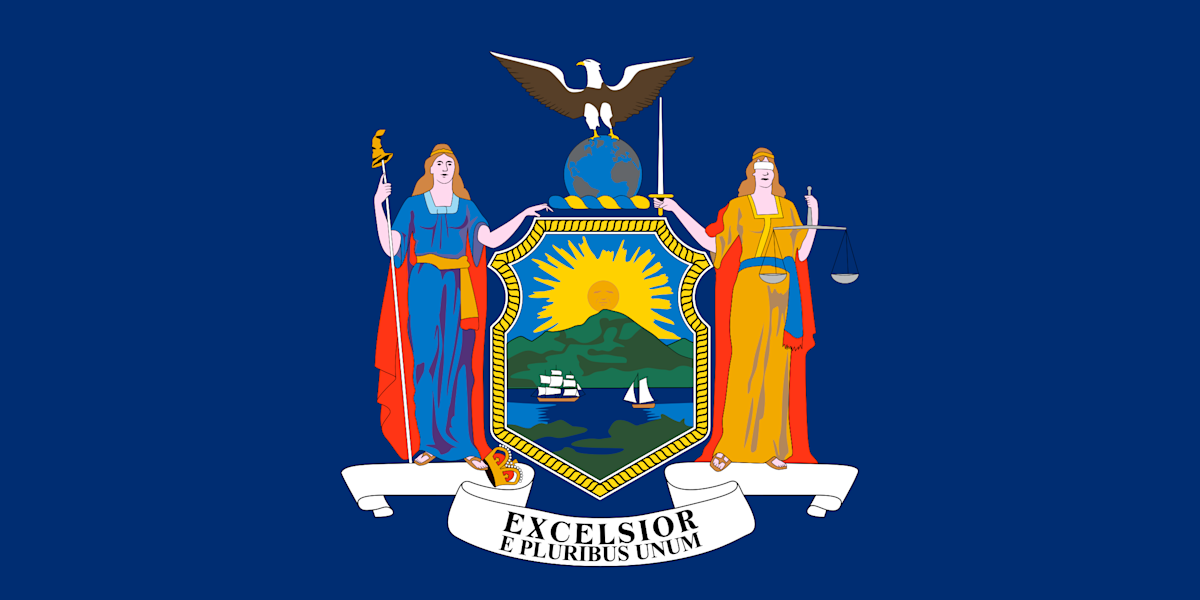New York Workers’ Compensation Laws

Across all the states, there are workers’ compensation laws in place to protect the rights of employees and help them recover from work-related injuries. These laws came about with the dawn of the Industrial Revolution, which paved the way for large-scale manufacturing but also exposed workers to hazardous work environments at the same time. In New York, for instance, the Triangle Shirtwaist Factory Fire in 1914, which took 146 lives, prompted numerous reforms within the Empire State’s safety and labor laws.
Despite all the advancements in workplace safety over the last century, workplace accidents are still common to this day. According to the annual report released by the New York State Workers’ Compensation Board, there were 161,808 assembled claims in 2022. Although the state follows a no-fault insurance system, 16,822 of these claims have been disputed by insurance providers.
New York also ranks among the states with relatively high healthcare costs, which can be a cause for concern for injured employees. In such situations, many would turn to their workers’ compensation benefits for financial reimbursement. This article provides New Yorkers with an overview of the state’s workers’ compensation laws and administrative procedures. It also explores the various types of benefits an injured worker may be entitled to and how benefits are calculated.
New York Workers’ Comp Insurance Requirements
New York’s Workers’ Compensation Law requires all employers in the state to provide insurance coverage for their employees. This mandatory policy applies to full-time and part-time employees, as well as workers who may be considered casual, temporary, seasonal, leased, or unpaid. Independent contractors are generally excluded from coverage.
Regardless of fault, employers must take full responsibility for any injuries or long-term illnesses sustained by an employee throughout the course of employment. However, employees must keep in mind that workers’ compensation does not cover intentional injuries, injuries sustained while under the influence of drugs or alcohol, or injuries resulting from personal conflicts with co-workers.
An employer may purchase an insurance policy from the State Insurance Fund or a private insurance provider or apply for self-insurance. Employers who wish to apply for self-insurance must meet the following requirements:
They must have no outstanding penalties.
Their legally authorized business form (e.g., proprietorship, partnership, or corporation) must have been around for at least three years at the time of application.
They must submit proof of current workers’ compensation coverage and three years of independently verified financial statements.
Their tangible net worth must exceed seven times the annual premium paid or the three-year average gross claims.
They must maintain a safety program within the workplace to lower the risk of accidents.
Once the application for self-insurance has been approved, the employer must submit a minimum security deposit. The information provided by the employer in the application form will determine the initial amount of the security deposit. The minimum deposit amount as of 2023 is set at $1,787,000.
Exemptions
Aside from independent contractors, employees who are not covered by workers’ compensation laws include the following:
Federal government employees.
Seafarers and longshore workers.
Teachers, police, firefighters, and sanitation workers in New York City.
For nonprofit organizations, the following are exempt from coverage requirements:
Individuals doing non-manual work for nonprofits.
Individuals working as teachers for nonprofits.
Members of religious orders and clergy carrying out religious obligations.
Participants in supervised amateur sporting activities conducted for nonprofit purposes.
Certain business entities are also exempt from carrying workers’ compensation. These are sole proprietorships, partnerships, and corporations with one or two owners—provided that they do not have employees, subcontractors, or unpaid volunteers.
Notice of Compliance
Employers are required by law to post a Notice of Compliance in conspicuous areas within the workplace, which must be printed in English and Spanish. A workers’ compensation form should also be posted along with the notice, and the form should include the insurer’s name, contact details, and the policy number for the workers’ compensation insurance.
Penalties for Noncompliance
Employers are subject to various penalties depending on the type of violation they commit. Some of the most common acts of noncompliance, as well as their corresponding penalties, are summarized in the table below:
Payments for fines can be made online or by money order or check. Check payments should be addressed to the Commissioner of Taxation and Finance and mailed to the NYS Workers’ Compensation Board. Email requests for authorization and instructions for electronic payments should be directed to billing@wcb.ny.gov.
New York Workers’ Compensation Benefits
New Yorkers who meet the eligibility criteria for workers’ compensation coverage are entitled to various types of benefits. The specific coverage of each benefit is discussed in the following sections.
Medical Benefits
Workers’ compensation provides full coverage for the cost of medical care required to treat workplace injuries. If you’re hurt at work, you may use your workers’ compensation benefits to pay for the following expenses:
Hospital stays.
Medical supplies.
Assistive devices.
Surgeries.
Travel costs for medical appointments.
In most cases, you need to find a medical provider that has been approved by the Workers’ Compensation Board to treat your injuries. You can do this by utilizing the Health Care Provider and IME Search. However, if your employer is part of a Preferred Provider Organization Program, then you must find a medical provider who is part of that program.
Since July 2023, Telehealth has been part of the state’s workers’ compensation system. It is implemented to increase New Yorkers’ access to providers and help those with mobility limitations.
Lost Wage and Disability Benefits
If your injury has rendered you unable to work for more than seven days, then you are entitled to receive lost wage benefits. The following guidelines apply:
The first seven days of impairment do not count toward lost wage benefits unless you remain impaired for more than 14 days.
If your impairment persists for more than 14 days, then you will become eligible to recover lost wage benefits from the first day you are unable to work due to a work-related injury.
After the insurer accepts your claim, payments must begin within 10 days after your injury is made known to your employer or within 18 days after the date of your injury, whichever is later.
The amount of your weekly benefit is determined using the formula below:
Weekly Benefits=23(Average Weekly Wage)(% of disability)
New Yorkers working for more than one employer at the time of injury may include both salaries when calculating their average weekly wage.
The minimum weekly benefit is currently set at $150. As per Legislation S1161-A/A2034-A, it is set to increase to $275 in 2024 and to $325 in 2025.
In 2026, the minimum weekly benefit will increase to one-fifth of the state average weekly wage. As to the maximum weekly benefit, the amount depends on the date of the injury.
Survivor Benefits
If the work-related injury or illness leads to the death of the employee, then their surviving spouse, minor children, or other legal dependents may receive survivor benefits. The compensation is equivalent to the average weekly pay of the deceased employee for 52 weeks before the date of the accident. In the absence of the aforementioned beneficiaries, the deceased worker’s estate or surviving parents may instead be awarded a lump-sum payment of $50,000.
Survivor benefits also cover memorial or funeral costs. In most New York counties, expenses should not go beyond $10,500. For the counties listed below, a higher cap of $12,500 applies:
Kings.
Queens.
New York.
Suffolk.
Nassau.
Bronx.
Westchester.
Richmond.
Rockland.
How to File a Workers’ Compensation Claim in New York
When it comes to recovering workers’ compensation benefits, the filing process can be daunting, especially if the employee is still suffering from their injuries. If you’re in this situation and you’re unable to file the claim personally, your authorized representative or employer may file the claim on your behalf.
This section walks you through the filing process and provides answers to some of the questions you may encounter along the way.
When Is the Deadline for Workers’ Compensation Claims in New York?
f you're injured at your place of work in New York, you have two years to file a workers’ compensation claim. The period is counted either from the date you obtained the injury or from the date you discovered the injury or illness was due to your job.
In cases involving occupational hearing loss, you have 90 days after being transferred away from the noisy environment or 90 days after leaving the place of employment that caused the hearing loss to file a claim.
Step-By-Step Guide on Filing a Workers’ Compensation Claim in New York
1. Seek Medical Attention
Before getting started on any paperwork, you must prioritize obtaining treatment from a medical expert who can help you with the specific type of injury you sustained. Obtaining medical care as soon as possible prevents your injuries from getting worse and allows you to have a faster recovery, which will then allow you to take care of the succeeding steps in a more timely manner.
Over the course of your treatment, you must follow your healthcare provider’s instructions. You may need to undergo physical therapy and certain medical procedures, take prescribed medications, or schedule follow-up appointments. Failure to follow your doctor’s instructions may lead to your claims being delayed or denied.
Immediate medical attention will also help you establish that your injury or illness is indeed work-related. A formal diagnosis by a healthcare provider serves as a crucial piece of evidence in your claim, and the lack of medical reports may lower the chances of approval for your claim.
2. Inform Your Employer
To get started on the application process for workers’ compensation, the first thing you need to do is notify your employer about your work-related injury or the diagnosis of an occupational illness. You have 30 days after the incident or date of diagnosis to notify your employer in writing or verbally about any work-related injury or illness.
Keep in mind that failure to meet the 30-day deadline increases the chances of your claim being denied by the private insurer or the workers’ compensation board.
3. Document Your Injuries and Expenses
Well-organized documentation of your injuries and expenses is fundamental to your claim and helps you receive a fair amount of compensation. Compiling your hospital bills, pharmacy receipts, medical reports, lab test results, and the like expedites the process of determining how much compensation you must receive.
4. File Your C-3 Form
There are three ways New Yorkers can file their Employee Claim (C-3) Form:
By filling out the electronic version of the form.
By completing a hard copy of the form and mailing it to the Workers’ Compensation Board. Hard copies can be obtained from the Board’s customer service centers or district offices.
By calling the NYS Workers’ Compensation Board at 1-866-396-8314 and having a representative assist you in completing the form.
You will receive a notification once your claim has been approved or rejected.
What Should One Do If a Workers’ Compensation Claim in New York Has Been Denied?
1. Understand Why Your Claim Has Been Denied
There are a number of reasons why your workers’ compensation claim may be denied, such as:
Your injuries do not require medical intervention.
You failed to seek medical attention in a timely manner.
You had a pre-existing condition before your employment period.
Your injury is not covered by workers’ compensation laws.
Your C-3 Form contains inaccurate information.
You missed the deadline for filing your claim.
2. Seek Legal Advice
Working with a New York workers’ comp attorney can help you better organize all the evidence you have in hand to increase the chances of your appeal yielding a favorable outcome. They can also provide legal counsel, assist you with filing a Notice of Claim, and represent you in the legal proceedings related to your claim and appeal.
3. Appeal Your Denied Claim
Appealing a denied workers’ compensation claim in New York has several stages.
First, once you have submitted your Notice of Claim, the Workers’ Compensation Board will schedule a hearing. A workers’ compensation judge will preside over the hearing, where you and your legal counsel will present your evidence and cross-examine the counterclaim by the insurance provider.
If you are not satisfied with the decision of the judge, then you can apply for a review by submitting Form RB-89 to the Workers’ Compensation Board’s Appeal Board. The form must be filed within 30 days after the judge’s decision, and a three-member panel from the Board will review the ruling. This panel can either affirm, modify, rescind, or send the appeal back to the judge for additional consideration.
Finally, the decision of the Workers’ Compensation Board’s Appeal Board can be appealed to the Third Department of the Appellate Division of the New York Supreme Court. You must submit a Notice of Appeal to the Appellate Division within 30 days of the Board’s decision. If you are still not satisfied with the Appellate Division’s verdict, you can raise your appeal to the New York Court of Appeals, which serves as the highest authority in handling appeals in the state.
Legal Resources for Injured Workers in New York
Navigating through the administrative and legal complexities when securing your workers’ compensation benefits can be an exhausting endeavor. The resources below can help take some of the burden off your shoulders so you can focus on recuperating instead.
Advocate for Injured Workers
The Office of the Advocate for Injured Workers provides assistance to employees facing more complex claims. It offers public education to help workers have a better grasp of their rights and hosts monthly webinars on relevant topics. Workers who are interested in arranging an educational webinar can contact the office by sending an email to AdvInjWkr@wcb.ny.gov or calling 877-632-4996.
Injured Workers’ Bar Association
Since its foundation in January 1997, the Injured Workers’ Bar Association has been representing thousands of injured workers annually. IWBA also helps New Yorkers get in touch with the nearest attorney or licensed hearing representative in their area. For further inquiries, you can speak with their representative by calling 518-694-5358 or sending an email to iwba@caphill.com.
Worker Justice Center of New York
Founded as Farmworker Legal Services of New York in 1981, the Worker Justice Center of New York strives to protect and advance workers’ rights. It empowers low-wage and agricultural workers through education and helps them exercise their rights. WJCNY serves around 5,000 workers annually, and they have offices in Rochester, Hawthorne, and Kingston. You can direct inquiries to their email, info@wjcny.org.
Expertise.com StaffAuthor
Step into the world of Expertise.com, your go-to hub for credible insights. We don't take accuracy lightly around here. Our squad of expert reviewers, each a maestro in their field, has given the green light to every single article you'll find. From rigorous fact-checking to meticulous evaluations of service providers, we've got it all covered. So feel free to dive in and explore. The information you'll uncover has been stamped with the seal of approval by our top-notch experts.




